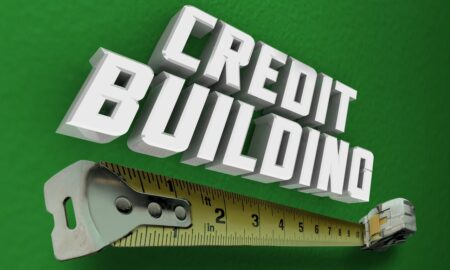Credit Sesame shares 10 practical steps to help you get back on the credit wagon and work towards improving your credit score.
Life can throw curveballs, and sometimes, your credit score may take a hit. Whether it is missed payments, high credit card balances, or unexpected financial stress, it is never too late to get back on the credit wagon. Rebuilding your credit takes time, but with patience and discipline, you can start making progress. It is never too soon or too late to get back on the credit wagon.
1. Review your credit report for mistakes
Your credit report contains important information about your financial history, and errors can negatively affect your score. Start by checking your credit reports from all three major credit bureaus—Experian, Equifax, and TransUnion—to make sure everything is accurate. If you notice any discrepancies, you may be able to dispute them. This step could help improve your credit score if the errors are corrected.
2. Pay bills on time
One of the most impactful actions you can take is to start paying your bills on time. Late payments can have a significant negative impact on your credit score. Set up reminders or automatic payments to ensure you never miss a due date. Paying on time does not guarantee immediate results, But it is an important step toward improving your credit over time.
3. Catch up on overdue accounts
If you have any past-due accounts, getting them up to date is a good idea. Bringing overdue accounts current can help you avoid additional penalties and may improve your score over time. Work with creditors to set up payment plans if needed and avoid letting accounts fall further behind.
4. Reduce your credit card balances
Your credit utilization ratio, or the percentage of available credit you use, is a key factor in determining your credit score. Ideally, you want to keep your credit utilization below 30%. Paying down high credit card balances could lower your utilization rate and help improve your credit score over time.
5. Consider using a secured credit card
If you’re having difficulty getting approved for a regular credit card, a secured credit card might be helpful. With a secured card, you make a deposit that becomes your credit limit. Using this card responsibly could help you build or rebuild your credit over time.
6. Consider using Credit Sesame’s Credit Builder
If you want to rebuild your credit, the Sesame Cash Credit Builder could be a great option. It is a prepaid debit card that allows you to build your credit history by using it for everyday purchases like groceries, utilities, and subscriptions. Unlike traditional credit-builder loans, this option does not require a credit check or security deposit. It reports your on-time payments to the credit bureaus, helping to improve your credit score over time.
7. Limit new credit applications
Every time you apply for credit, a hard inquiry is made, which can cause a temporary dip in your credit score. Too many applications in a short period of time can signal to lenders that you may be a risk. To avoid negatively affecting your credit score, consider limiting the number of credit applications you submit.
8. Keep old accounts open
The length of your credit history accounts for part of your credit score, so it is important to keep older accounts open. Even if you are not using them, maintaining these accounts can improve your credit score by showing that you have a long history of managing credit responsibly. However, avoid accumulating new fees by keeping only accounts you can manage.
9. Diversify your types of credit
A mix of credit types—credit cards, loans, and mortgages—can potentially help your credit score. Responsibly managing different types of credit over time may positively impact your credit score. Be wary of opening new accounts simply for the sake of diversifying as opening too many news accounts at the smae time can negatively impact your credit.
10. Use credit monitoring
Credit monitoring services can help you track your credit score and be alerted to any changes or suspicious activity. Monitoring your credit regularly can help you spot problems early and take action before they negatively affect your credit. Credit Sesame offers free credit monitoring to help you stay on top of your credit health.
Get back on the credit wagon
Improving your credit score is a gradual process that requires consistent effort and financial discipline. You can start working towards better credit by following these 10 steps—checking your credit report, paying bills on time, reducing debt, and establishing new healthy credit habits. Progress may take time, but taking the first step to get back on the credit wagon could move you toward a healthier financial future.
If you enjoyed 10 ways to get back on the credit wagon if you fell off you may like,
Disclaimer: The article and information provided here are for informational purposes only and are not intended as a substitute for professional advice
Read the full article here
















